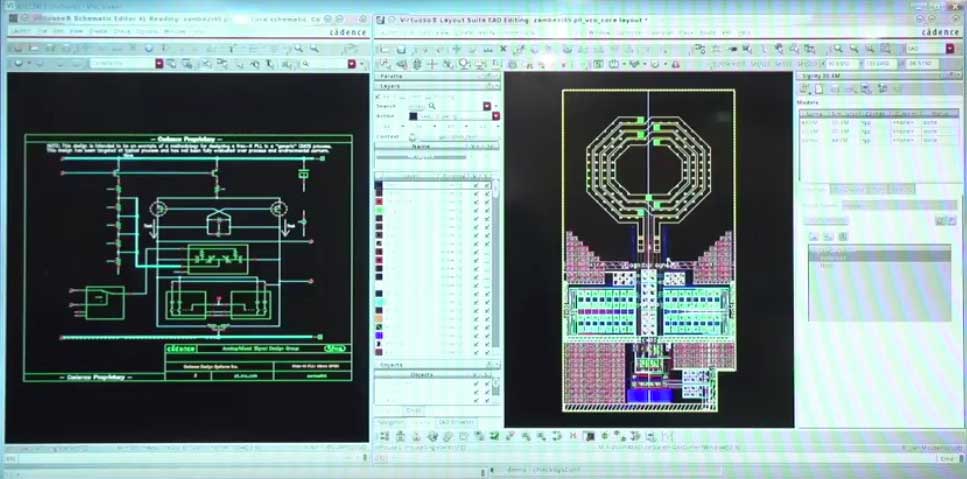Cadence has done a good job of keeping up with the needs of analog RF designs. Of course, the term RF used to be reserved for a thin slice of designs that were used specifically in RF applications. Now, it covers things like SerDes for networking chips that have to operate in the gigahertz range. Add that to the trend of combining RF and digital blocks onto one die or into the same package and the scope of analog RF designs expands pretty rapidly.
Nevertheless, there were a few noticeable holes in the Cadence solution when it came to addressing RF designs. In the case of simulation, different parts of the design often resided in Allegro SiP or Virtuoso, so integrating and managing pre and post layout simulation was problematic. The other hole for RF users were the options available for EM solver based model generation and simulation. However, Cadence has expended a lot of effort to resolve these issues in their new Virtuoso RF Solution, and the results look pretty promising.
I had a conversation with Michael Thompson, RF Solutions Architect at Cadence, about the work they have recently done to improve the entire solution. His first point was that it used to be OK to do design separately, but changes in IC and package design mean that many more things are being combined and need to be looked at in a unified way. Thus, Virtuoso and Allegro SiP should to work together for RF designs. This created a requirement for lowering the barriers to exchanging design data between the systems, creating free bidirectional data exchange. They added the ability to concurrently use multiple technologies for simulation and layout. The key is to have one golden schematic for the entire design, including the package and multiple die, inside of Virtuoso.
The other hole they needed to plug was integration with EM solvers to make the flow seamless. Previously Cadence relied on a patchwork of external solvers integrated with SKILL code through the Connections Program. Of course, Cadence had their FEM solver that came in through the Sigrity acquisition. However, it was really targeted at board and package level problems as evidenced by its SiP integration. The majority of IC solvers are Method of Moments. Cadence struck a partnership with National Instruments to integrate their AWR Axiem tightly into Virtuoso. At the same time, they also created a path for Sigrity in the IC flow.

With seamless integration for extraction and simulation set-up, the ease of adding RF models for critical structures has improved dramatically. The models are S-parameter, but Spectre-RF has also improved its S-parameter handling. As a circuit’s design progresses, designers can move from QRC, to FEM and MoM, while keeping each of these as separate extracted views. The Hierarchy Editor allows swapping models for the simulation runs.
For the Virtuoso RF solution, Cadence has also been working on new device models. One example that Michael brought up was GaAs models.
Their solution brings together package and IC design into one environment where difficult RF design problems can be solved more easily. This new solution was shown for the first time at IMS. Ensuring that teams working on the package and on the IC can share data and analysis results makes sense with the growing complexity of RF designs. For more information on the new Cadence Virtuoso RF Solution, I suggest looking at the solution page on their website.
Share this post via:




Comments
There are no comments yet.
You must register or log in to view/post comments.